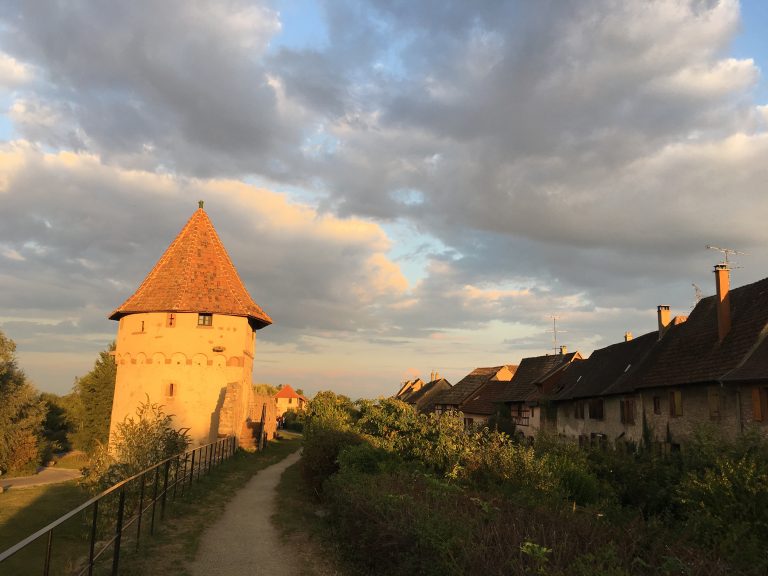
Bergheim
Bergheim, a superb village on the wine route, surrounded by its ramparts, is still relatively preserved from tourists. The city center has many beautiful winegrowers’ houses. From the top of the superbly preserved ramparts, you can admire the hillsides of the vineyard, overlooked by the Haut-Koenigsbourg castle.
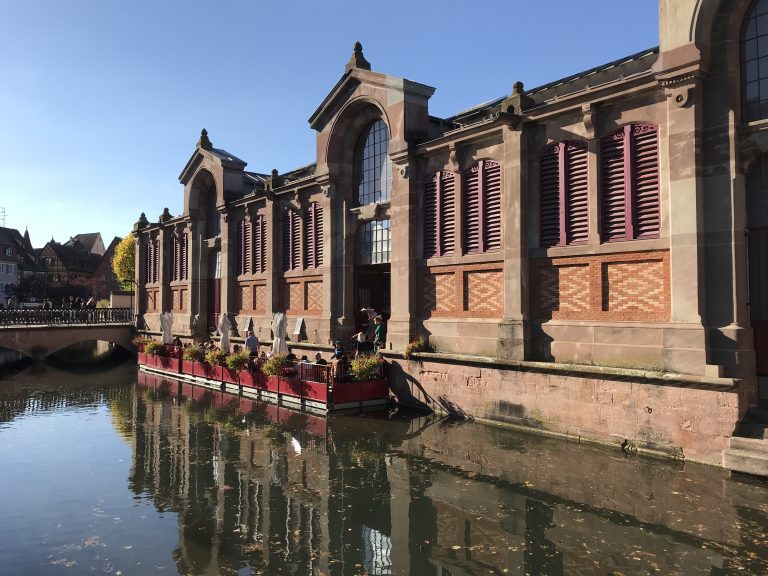
Colmar
The first written document mentioning Colmar is dated 823, when Louis the Pious donated an estate in the Columbarium area to the Abbey of Munster. The region was then probably occupied by a few farm estates. The town developed gradually and gained city status at the beginning of the 13th century, under the suzerainty of Emperor Frederick II of Hohenstaufen. It was at this time that various religious communities began to settle, such as the Franciscans, the Dominicans and the Augustinians.
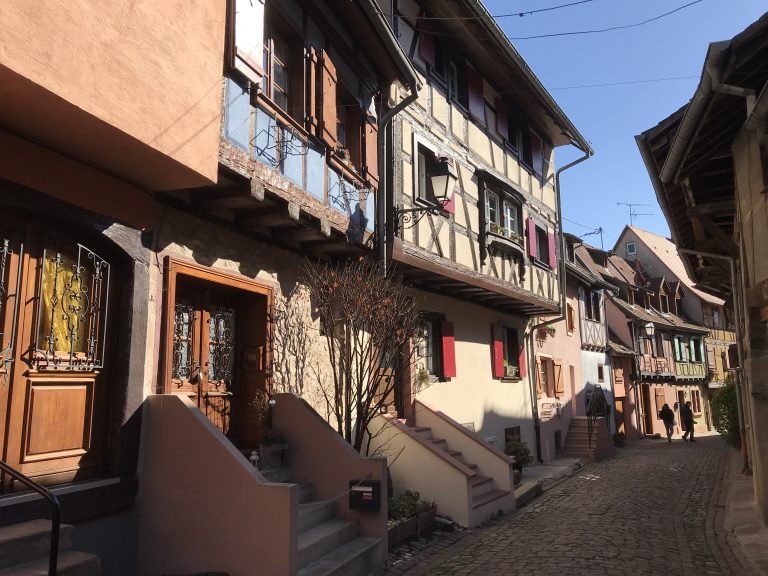
Eguisheim
The site seems to have been occupied since the Palaeolithic, then by the Romans. It is from this period that dates the first cultivation of the vine.
The village began its development after the construction of the first castle of Eguisheim in the 8th century by Count Eberhardt, grandson of the third Duke of Alsace. He is thus the ancestor of Pope Leo IX and the nephew of Sainte-Odile, patroness of Alsace.
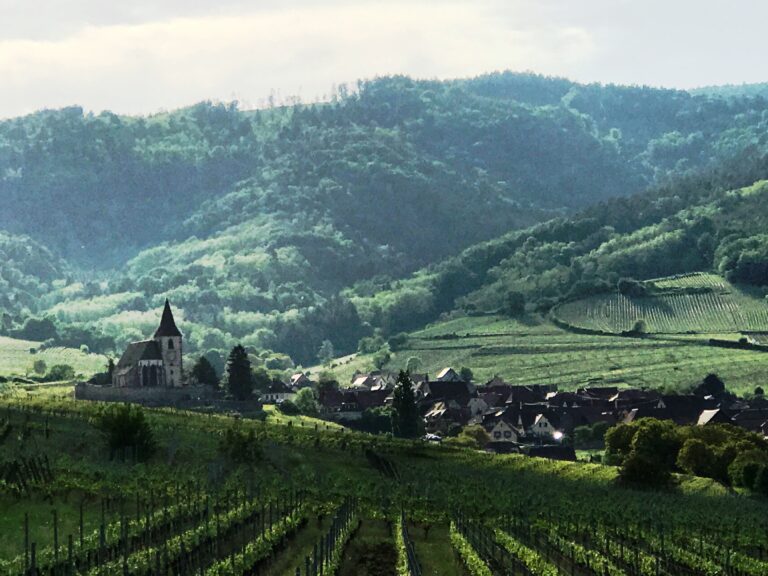
Hunawihr
According to legend, the locality was the property of Huna and Hunon, who bequeathed Hunawihr to the monastery of Saint-Dié in the 7th century.
The village subsequently belonged to the Counts of Horbourg and then Württemberg. Place of pilgrimage of Sainte Hune, the village attracts pilgrims, before becoming Protestant. Alsace became French, Catholics and Protestants share the church.
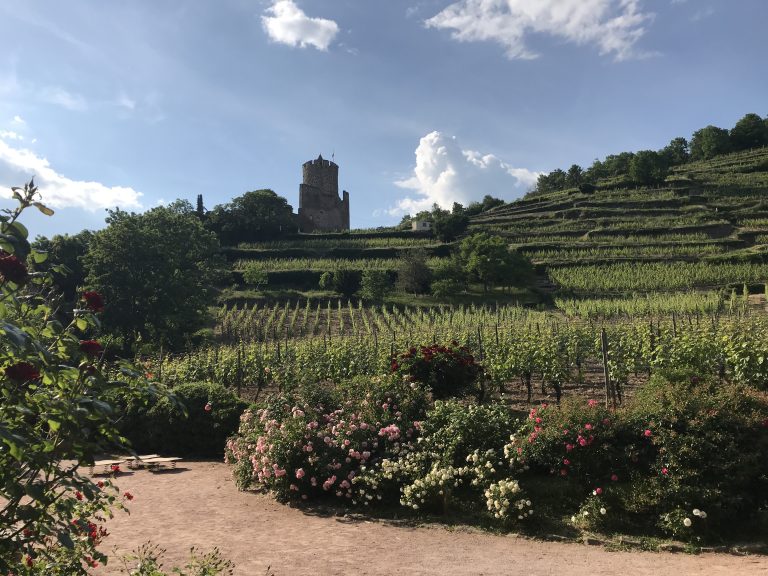
Kayserberg
Kaysersberg surprises with the charm of its medieval sites grouped around the church and the fortified bridge dominated by the castle, a vestige of the former free city of the decapolis. Its strategic position revives the memory of the Roman road which linked Alsace to Lorraine. It is one of the most charming towns in Alsace with its cobbled streets and richly decorated half-timbered houses. In addition, the birthplace of Doctor Schweitzer is located on the road to Santiago de Compostela.
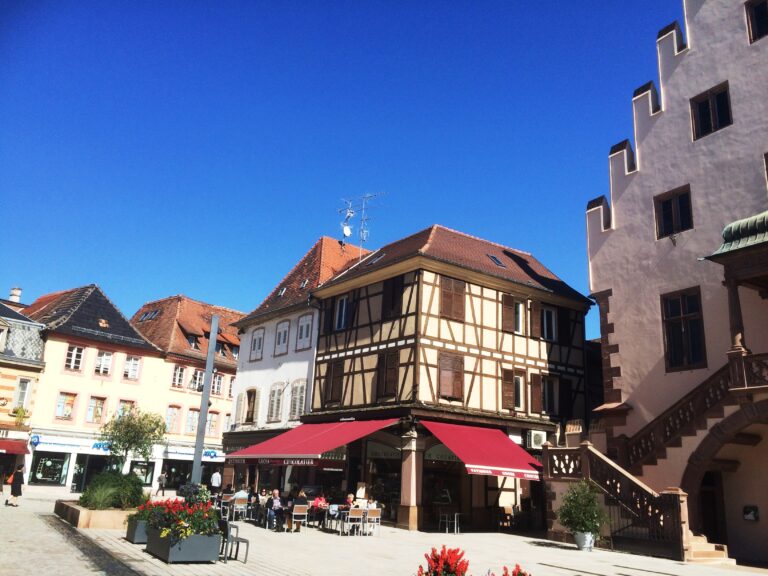
Selestat
Legend has it that the city was founded by the giant Sletto. The first written record dates back to the 8th century, but the site was then part of the village of Kintzheim. The expansion of the city began in the 11th century, when Hildegarde de Buren, mother of the first of the Hohenstaufen, founded a church there which was occupied from 1094 by monks from Conques, venerating Sainte Foy.
This priory runs the city until Frederick II of Hohenstaufen grants the status of free city to Sélestat.
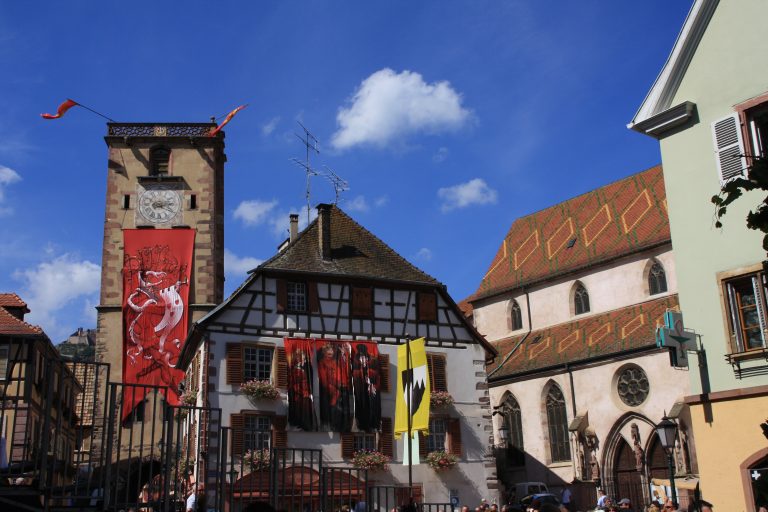
Ribeauville
It was in the 11th century that the Lord of Reinbaud settled on these lands. He built the castle of Reinbaudpierre there, whose name would later become Ribeaupierre, a powerful family in the region and in the Holy Roman Empire.
The village will obtain the status of city at the end of the 13th century, a period which also sees the construction of the castles of Girsberg and Haut Ribeaupierre. Walls also surround the city, then divided into 4 independent districts.

Riquewihr
The first mention of Riquewihr dates from 1094, the village was then a possession of the counts of Horbourg who built the first fortified enclosure in 1291. The village obtained city status in 1320. Riquewihr was sold in 1324 by the Counts of Horbourg to Ulrich X of Württemberg.
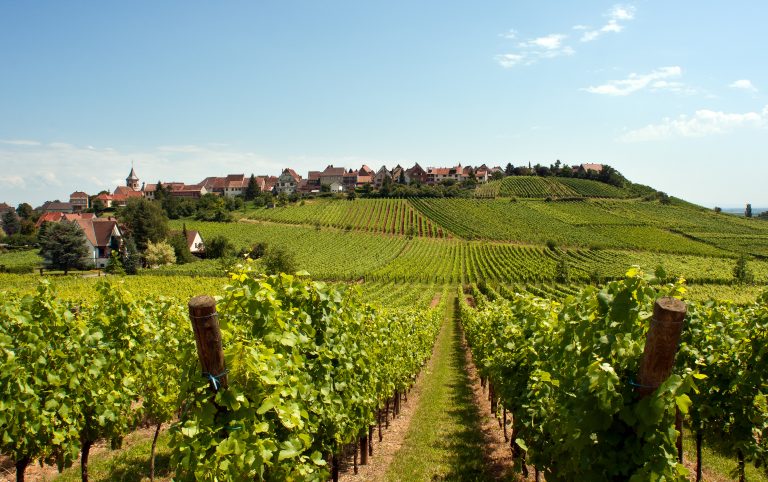
Zellenberg
At the origin of Zellenberg, there was a small monastic establishment (Zell) installed here from the 10th century. In 1252 Walter de Horbourg built a castle at the top of the hill (Berg), and moved the village, then at the foot of the hill, to the top. From the 14th century the village became the possession of the Ribeaupierre family who kept it until the Revolution. The castle was destroyed in 1791.


